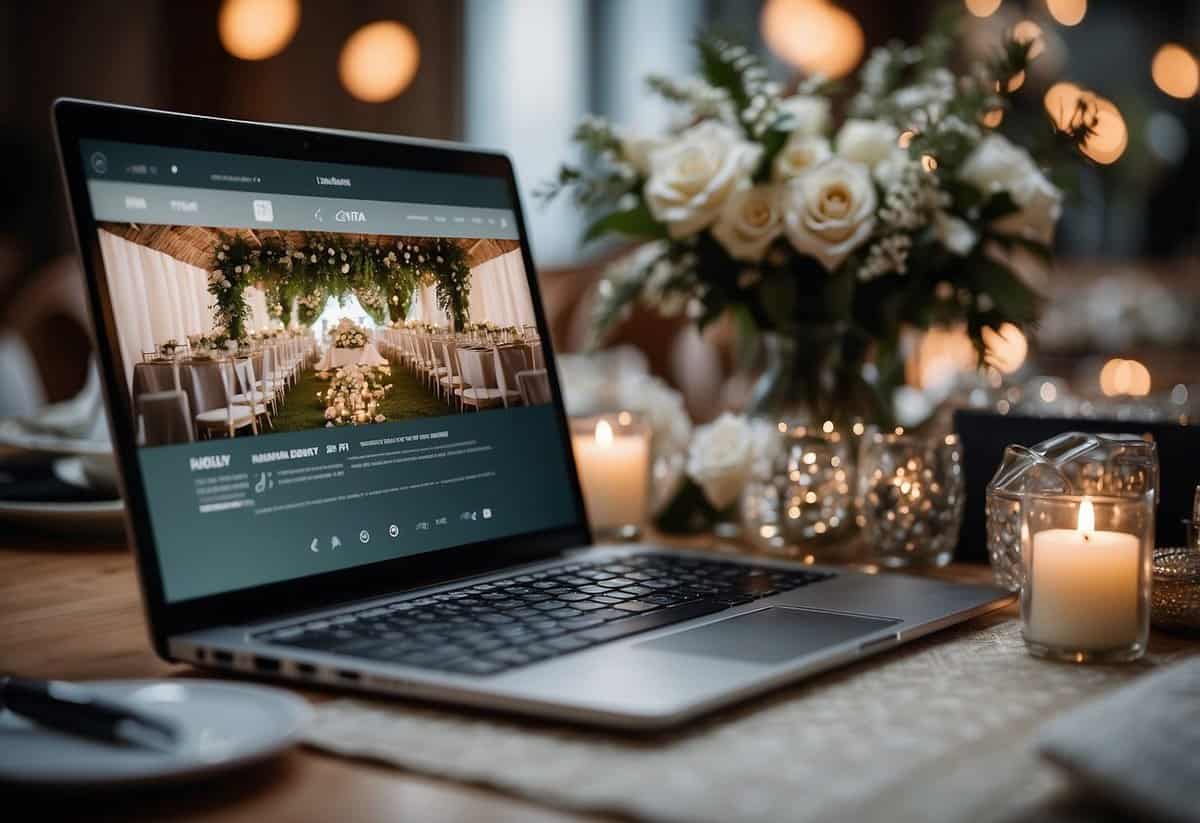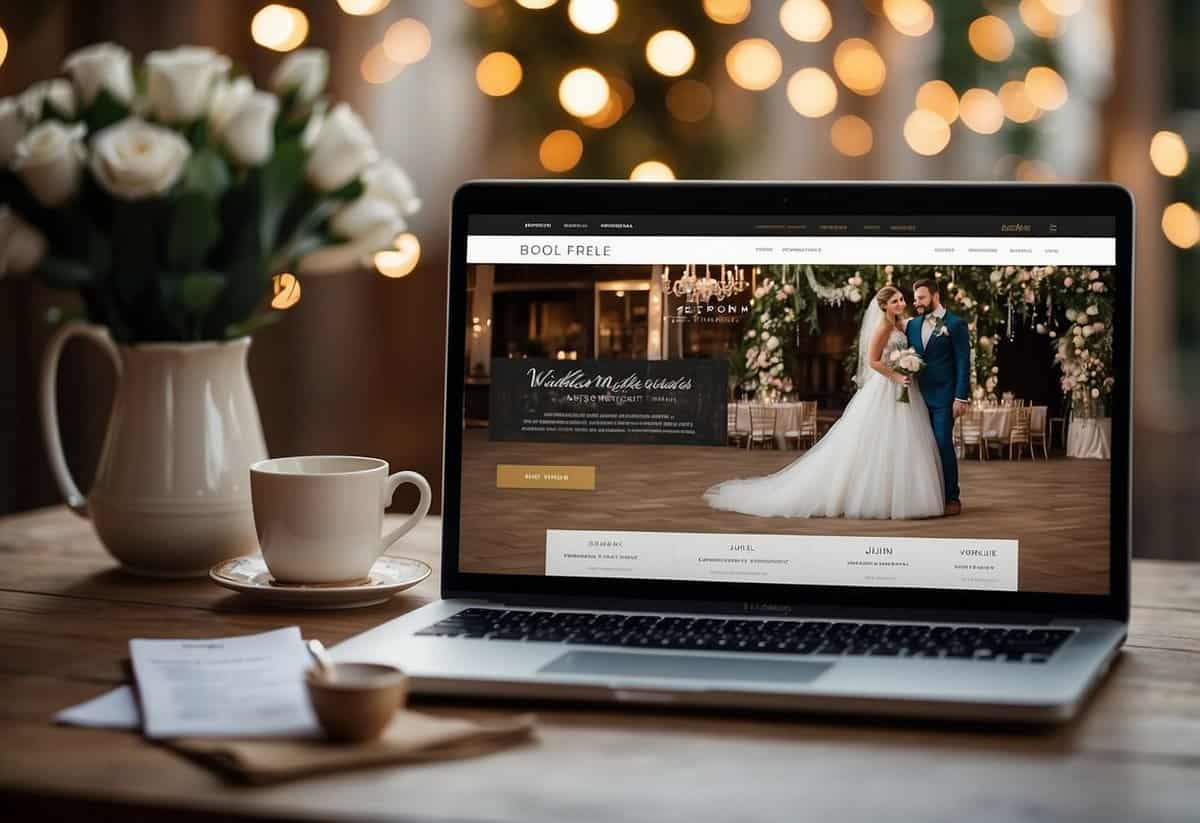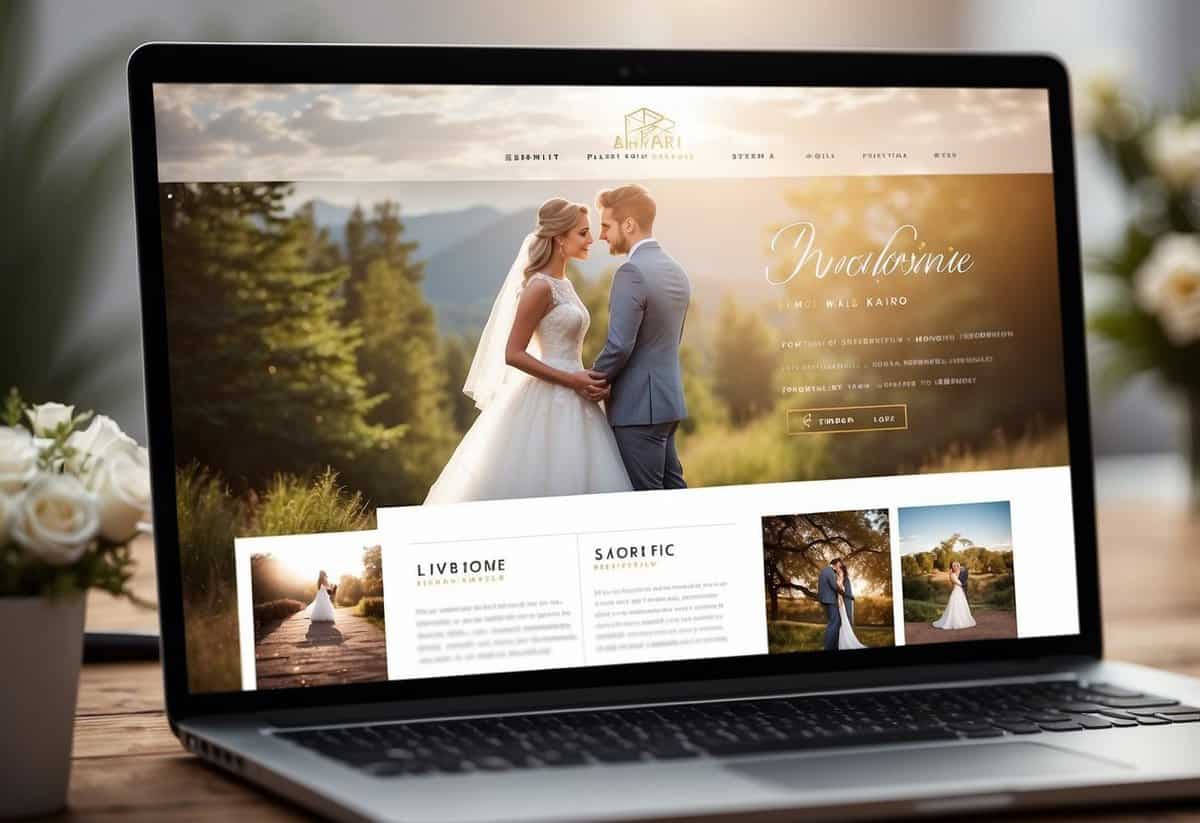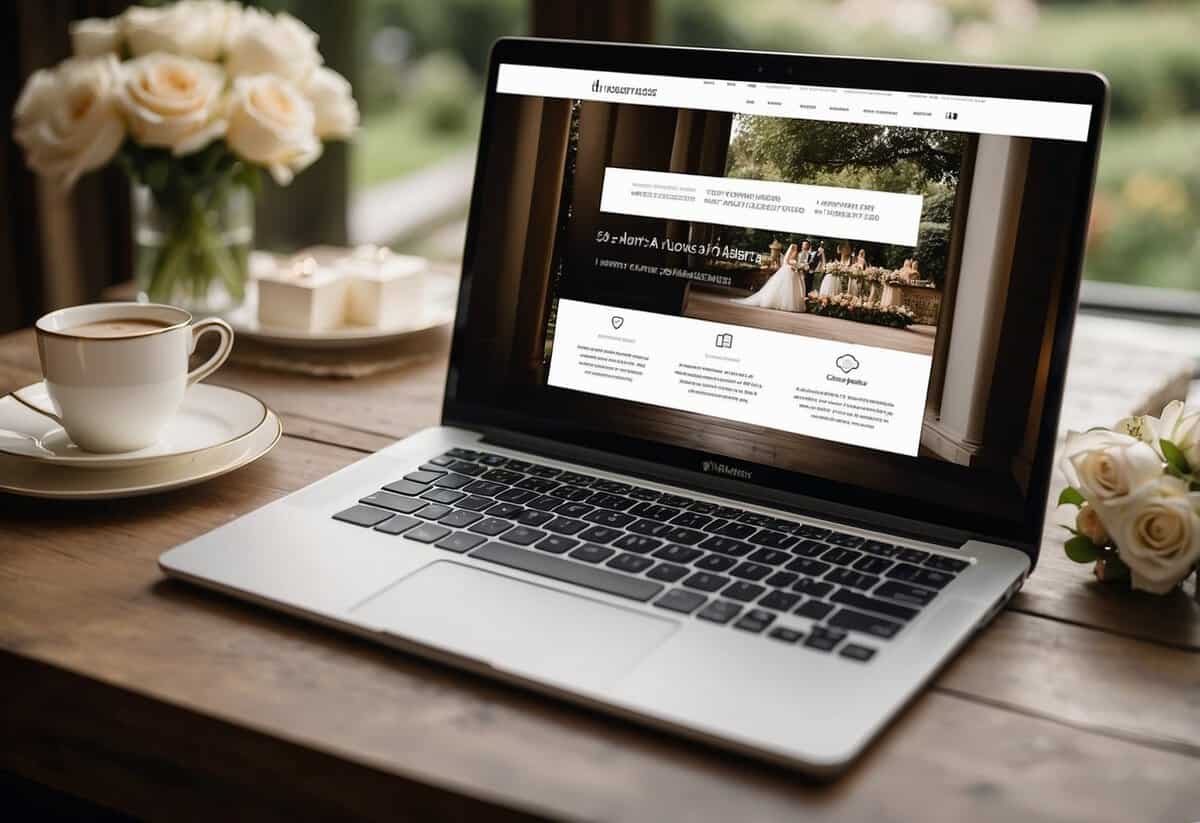Does It Cost Money to Make a Wedding Website? Tips and Insights
Are you planning a wedding and wondering if it costs money to make a wedding website? You’re in the right place! Creating a wedding website can be free, but there are options to add customized features for a fee. Using platforms like Zola and The Knot, you can start with free templates and basic features.

For those who want a personal touch, you might consider buying a custom domain. On Zola, a custom domain starts at $14.95 per year, while The Knot offers a unique URL for $19.99 yearly. This can make your wedding website memorable and easy for guests to find. Whether you stick with the free version or upgrade for extra personalization, you’ll be able to share all your wedding details conveniently online.
Investing in a wedding website not only helps keep your guests informed but also adds a touch of elegance to your wedding planning. From sharing your love story to managing RSVPs, the options are both budget-friendly and flexible to suit your needs.
Understanding the Basics of Wedding Websites

Creating a wedding website helps you share important details about your big day with your guests. It’s an easy way to keep everyone informed and organized.
Purpose of a Wedding Website
A wedding website serves many purposes. It acts as a central hub where guests can find information about the wedding.
You can include invitations and online RSVP options, making it simple for guests to respond. Adding the venue address with directions helps your guests arrive without trouble. You can also share details like the dress code and any special instructions.
A wedding website allows you to tell your love story and share engagement photos. This personal touch makes your website special and unique. Including information about the wedding party can help everyone get to know your family and friends involved in the ceremony.
Key Features to Consider
When creating your wedding website, consider adding key features to make it useful for your guests. Begin with basic wedding details such as the date and time of the ceremony and reception.
Including accommodation options ensures your out-of-town guests have places to stay. Highlight recommendations and reservation links if possible. Your website should also feature an RSVP system. This helps you track who’s attending and manage responses easily.
Personalization is another important feature. Use your website to share your engagement photos and love story. Make it visually appealing by choosing a design that matches your wedding theme. Also, list your wedding party and their roles, which adds a warm touch for your guests.
Keep your website user-friendly. Ensure all links work correctly and that information is clear and easy to find. This way, your guests can navigate effortlessly and stay informed about your special day.
The Price Point of Creating a Wedding Website

When setting up a wedding website, you can choose between free platforms or paid options with additional features. The costs can vary depending on what you need for your event.
Free vs. Paid Platforms
Building a wedding website can be free. Platforms like The Knot and Zola offer free website builders with customizable wedding website templates. These free plans include basic features like event information, RSVP management, and photo galleries. A free wedding website helps you get started without any costs.
While the free options are great, you might want additional perks. Paid platforms provide enhanced features, more design options, and greater flexibility. Costs for paid plans can start as low as $14.95 and go up depending on the additional services. The main benefits of upgrading usually include ad-free experience, premium support, and advanced customization options that make your website feel more personal.
Premium Features and Custom Domains
Premium features add unique elements to your wedding website. They can include personalized RSVP questions, password protection, and advanced design tools. If you want a custom domain name, this typically comes at an extra cost.
For instance, The Knot charges $19.99 per year for a custom domain. Custom domains let you choose a memorable URL, making it easier for guests to remember and access. Platforms like Zola offer ways to redirect an already purchased domain or buy directly through them.
These premium features not only make your website look more polished but also add functionality that can make your wedding planning smoother. Deciding whether to spend money on premium features or custom domains depends on your needs and budget.
Designing Your Wedding Website

Creating a wedding website involves selecting a template that matches your style and adding personal touches to make it unique. Important elements include colors, fonts, and images to suit your theme.
Choosing the Right Template
Selecting the right template is crucial. You want a design that reflects the vibe of your wedding. Many website builders offer a variety of themes and templates. For example, The Knot and Minted provide several choices ranging from elegant to casual.
Think about your wedding colors and how they will look on the site. If your wedding colors are blue and gold, look for templates that include these colors. Ensure that the template you pick is easy to navigate for your guests, with clearly visible sections like the schedule, travel info, and the wedding party.
Customization Options
Once you pick a template, it’s time to customize it. You can add your wedding colors, choose fonts, and upload your own images. For instance, you can include a gallery of your favorite engagement photos. Many platforms, like Zola, let you add a custom domain or redirect one you purchased elsewhere.
Create sections for your story, wedding details, and RSVPs. Use visuals to make the site more engaging. Adding photos of the wedding party with a bit of text about each member can make it more personal. The goal is to create a site that not only looks good but also provides all the necessary details in an organized manner.
Integrations and Extras

When building a wedding website, several integrations and extras can enhance the experience for your guests. These features can make the planning process smoother and ensure everyone has the information they need.
Map and Directions
Including a Google Map on your wedding website is very useful. It helps guests easily find the wedding venue without getting lost.
You can embed the map directly onto your site. This feature typically allows guests to get directions from their location to the venue. Clear markers for ceremony and reception locations make planning easier.
Pro Tip: Offer detailed directions for those unfamiliar with the area. Mention nearby landmarks or notable points to watch for. This way, guests will be confident they’re heading the right way.
Accommodation and Travel Details
Providing Accommodation Information is essential, especially for out-of-town guests. You can list hotels, inns, or vacation rentals close to the venue.
Important: Include contact details and a brief description of each place. If possible, share links to booking pages to make reservations simple.
You might also want to list Travel Information. Include public transport options, airport details, and car rental services. This helps your guests plan their trips effortlessly.
Bonus: Some venues have partnerships with local hotels for discounted rates. Check if this is available and share these deals with your guests.
Registry and RSVP Management
Managing your Gift Registry online simplifies the process for you and your guests. List all the stores where you’ve registered, along with links directly to your wish lists.
Highlight: Make sure to include any special instructions about the registry to avoid confusion.
For RSVP Management, use built-in form tools on your wedding website. This digital approach is not only convenient but also helps you keep track of responses efficiently.
Guests can easily fill out their RSVPs online, indicating meal preferences or other details you need. Automated reminders for those who haven’t responded are beneficial in ensuring you get all the information on time.
Pro Tip: Providing a contact form for any questions can also be helpful. This way, guests feel supported throughout the planning process.
Horizontally vs Vertical Design

Choosing between a horizontal or vertical design layout for your wedding website can make a big difference.
Horizontal Design:
- Scroll Direction: Users scroll from left to right.
- Suitable For: Displaying wide images and galleries.
- Ease of Use: It can be less intuitive for users who are accustomed to vertical scrolling.
Vertical Design:
- Scroll Direction: Users scroll from top to bottom.
- Suitable For: Detailed content like stories and event details.
- Ease of Use: More intuitive and user-friendly since most websites use this format.
Here’s a quick table to compare:
| Feature | Horizontal Design | Vertical Design |
|---|---|---|
| Scroll Direction | Left to Right | Top to Bottom |
| Best For | Wide Images, Galleries | Stories, Event Details |
| User Intuition | Less Intuitive | More Intuitive |
Using a drag-and-drop editor, you can experiment with both styles without needing to code. This allows you to see what works best for your content and audience. When you use a builder like Minted or Zola, customizing your layout is easy and fun.
Think about what kind of experience you want your guests to have. This will help guide you in picking the right layout.
Connect and Share

Creating a wedding website helps you connect with your guests and share important details. You can easily update everyone about your wedding date and other vital plans.
Using a wedding hashtag can be a fun way to collect and share photos from your big day. Encourage your guests to use this hashtag on social media.
Keep your wedding registry information easily accessible. You can link to your chosen registries so guests can find and buy gifts without any hassle.
Managing your guest list becomes much simpler. You can track RSVPs and even provide a form for guests to fill out. This makes it easier for you to know who is coming and if they have any special requests.
Sending out updates and last-minute changes is easy with a website. You can post updates and notify everyone of any changes without having to send individual messages.
Ensure your guests can reach out if they need to. Include your contact information or create a form so guests can ask questions directly through the website.
Incorporate digital versions of your wedding stationery like invites and save-the-date cards. This keeps everything in one place for easy reference.
Make an RSVP form where guests can confirm their attendance and select meal choices. This helps you stay organized and plan better.
Using a wedding website allows you to communicate smoothly with your guests and make sure they have all the information they need in one convenient place.



